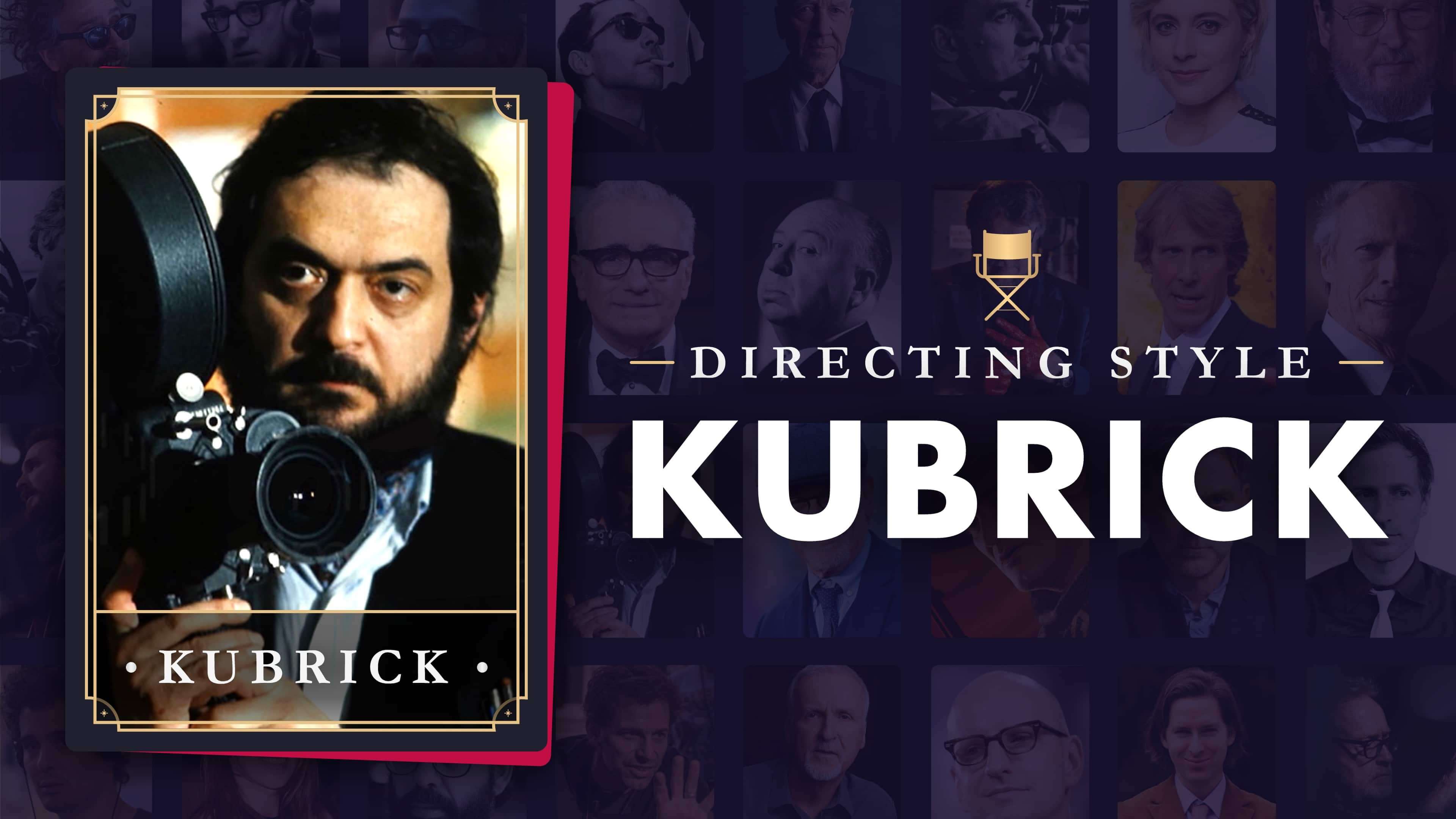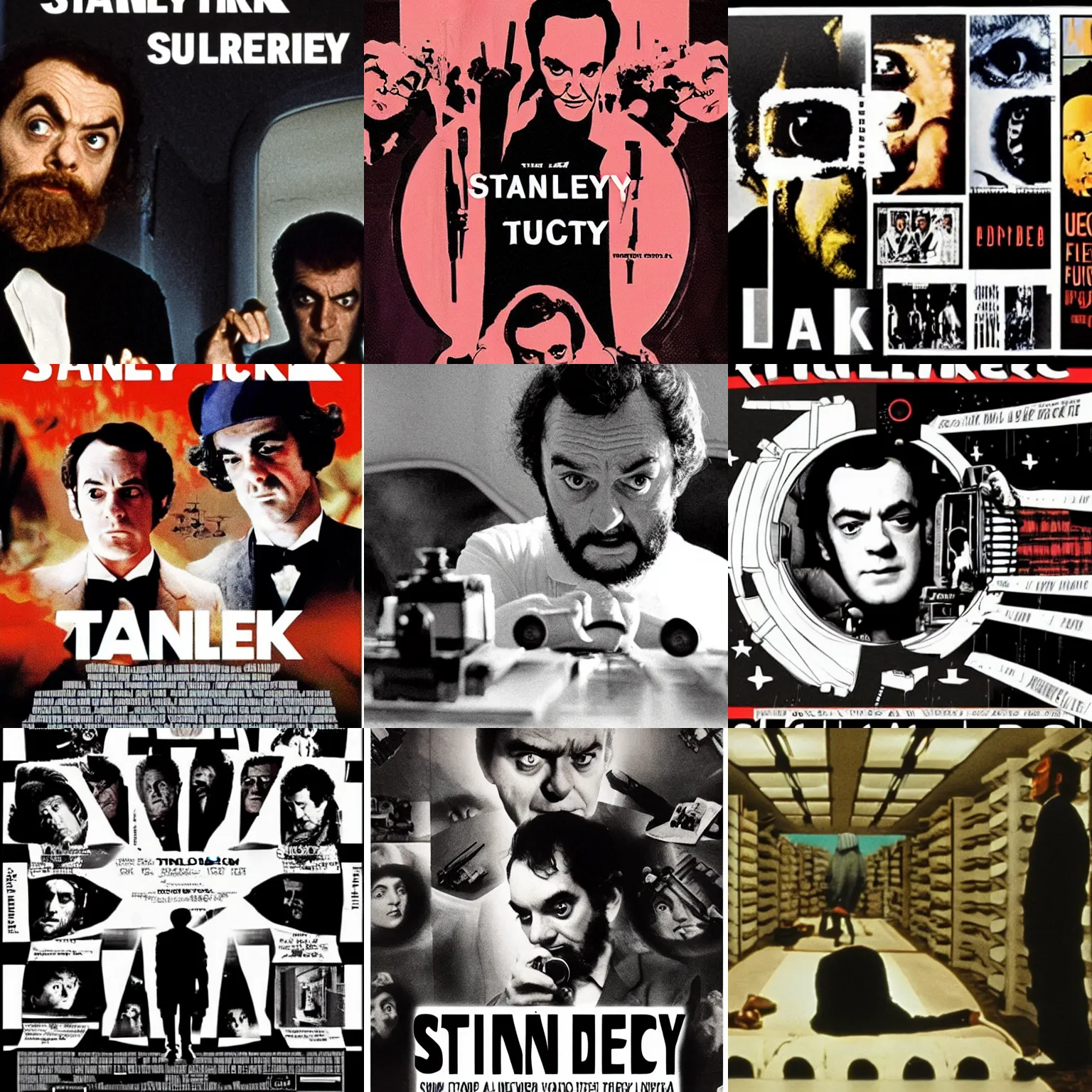Kubrick: The Mastermind Behind The Lens
Stanley Kubrick is not just a name; he’s a legend, a maestro of cinema, and a visionary who redefined storytelling on the silver screen. Born in 1928, Kubrick emerged as one of the most influential filmmakers in history, leaving an indelible mark on the film industry with his groundbreaking works. From "2001: A Space Odyssey" to "The Shining," his films are celebrated for their innovation, depth, and timeless appeal. But what exactly makes Kubrick so special? Let’s dive in and explore the man behind the lens.
Stanley Kubrick was more than just a director; he was a perfectionist, an artist, and a thinker who pushed boundaries in ways that few dared to attempt. His films weren’t just movies—they were experiences, challenging viewers to think deeper, feel more intensely, and question reality itself. With a career spanning over four decades, Kubrick’s legacy continues to inspire filmmakers and cinephiles alike.
Whether you’re a fan of his work or simply curious about the man who brought us classics like "Dr. Strangelove" and "A Clockwork Orange," this article will take you through the life, career, and impact of Stanley Kubrick. So grab your popcorn, sit back, and let’s uncover the genius of one of cinema’s greatest minds.
- Zach Roerig The Rising Star Who Stole Hearts In Hollywood
- Top Movies Download Website Hindi Dubbed Your Ultimate Guide To Bollywood Thrills
Table of Contents
- Biography
- Early Life and Influences
- Filmography and Legacy
- Kubrick’s Directorial Style
- Innovations in Filmmaking
- Controversies and Criticisms
- Personal Life
- Impact on the Film Industry
- Awards and Recognition
- Kubrick’s Influence on Future Filmmakers
Biography
Before we dive into Kubrick’s illustrious career, let’s first get to know the man himself. Stanley Kubrick was born on July 26, 1928, in the Bronx, New York City. From a young age, he showed a keen interest in photography and filmmaking, eventually turning his passion into a career that would change the world of cinema forever.
Biographical Details
| Full Name | Stanley Kubrick |
|---|---|
| Birthdate | July 26, 1928 |
| Place of Birth | The Bronx, New York City, USA |
| Occupation | Film Director, Producer, Screenwriter, Photographer |
| Years Active | 1953–1999 |
| Spouse | Christiane Harlan (m. 1958–1999) |
| Children | 3 daughters: Katharina, Victoria, and Anya |
| Date of Death | March 7, 1999 |
Early Life and Influences
Kubrick’s fascination with the visual arts began in his childhood. His father, a doctor, gifted him a camera when he was just 13 years old, sparking his love for photography. By the time he was a teenager, Kubrick was already selling his photographs to Look magazine, a testament to his early talent and dedication.
His education, however, wasn’t conventional. Kubrick wasn’t a stellar student, often struggling in school. But his passion for chess, photography, and films filled the gaps in his formal education. These early interests shaped his future career, teaching him patience, strategy, and an eye for detail—skills that would later define his filmmaking style.
- When Is Kats Baby Due The Ultimate Countdown Guide
- Lil Jeff Real Name Unveiling The Truth Behind The Rising Star
Filmography and Legacy
Kubrick’s filmography is a treasure trove of cinematic masterpieces. From his debut feature "Fear and Desire" in 1953 to his final film "Eyes Wide Shut" in 1999, each of his works left an indelible mark on the industry. Let’s take a look at some of his most iconic films:
- Paths of Glory (1957): A powerful anti-war film that showcased Kubrick’s ability to tackle complex themes with sensitivity and depth.
- Dr. Strangelove (1964): A darkly comedic take on the Cold War, this film cemented Kubrick’s reputation as a master of satire.
- 2001: A Space Odyssey (1968): A groundbreaking sci-fi epic that pushed the boundaries of special effects and storytelling.
- A Clockwork Orange (1971): A provocative exploration of free will and societal control, this film remains as relevant today as it was decades ago.
- The Shining (1980): A psychological horror classic that redefined the genre with its haunting atmosphere and unforgettable performances.
Kubrick’s Directorial Style
What sets Kubrick apart from other filmmakers is his unique directorial style. Known for his meticulous attention to detail, Kubrick was notorious for taking numerous takes to achieve perfection. His perfectionism, while often criticized, resulted in films that were visually stunning and technically flawless.
Another hallmark of Kubrick’s style was his use of long takes and innovative camera techniques. He often employed wide-angle lenses and intricate tracking shots to create immersive cinematic experiences. His collaboration with cinematographers and composers also played a crucial role in shaping the distinctive look and feel of his films.
Innovations in Filmmaking
Kubrick was a pioneer in the world of filmmaking, constantly pushing the boundaries of technology and creativity. One of his most notable innovations was the development of the Steadicam for "The Shining," which allowed for smooth, fluid camera movements that added to the film’s eerie atmosphere.
Additionally, Kubrick’s use of classical music in his films, such as the iconic "Also sprach Zarathustra" in "2001: A Space Odyssey," set a new standard for film scoring. His willingness to experiment and embrace new technologies ensured that his films remained ahead of their time.
Controversies and Criticisms
Despite his genius, Kubrick wasn’t without controversy. His films often sparked heated debates, with critics and audiences alike divided over their content and messages. Films like "A Clockwork Orange" and "The Shining" were accused of glorifying violence, while others criticized his perceived misogyny and cold, detached storytelling.
However, Kubrick embraced these criticisms, viewing them as part of the creative process. He believed that art should provoke thought and discussion, even if it meant stirring up controversy.
Personal Life
Outside of his professional life, Kubrick was a private individual who preferred to keep his personal affairs out of the public eye. He married three times, with his final marriage to Christiane Harlan lasting until his death in 1999. Together, they had three daughters, and Kubrick often credited his family for their unwavering support throughout his career.
Kubrick was also known for his love of animals, particularly cats, which often made appearances in his films. His reclusive nature and dedication to his craft made him a somewhat enigmatic figure, but those who knew him described him as a kind and thoughtful man with a deep passion for his work.
Impact on the Film Industry
Kubrick’s influence on the film industry cannot be overstated. His films have inspired countless directors, screenwriters, and filmmakers, shaping the way stories are told on screen. His emphasis on visual storytelling, innovative techniques, and thematic depth has set a new standard for cinematic excellence.
Moreover, Kubrick’s willingness to tackle controversial and complex subjects has encouraged filmmakers to explore new frontiers, challenging societal norms and pushing the boundaries of what cinema can achieve.
Awards and Recognition
Throughout his career, Kubrick received numerous accolades for his work, including multiple Academy Award nominations. While he never won an Oscar for Best Director, his film "2001: A Space Odyssey" earned him an Academy Award for Best Visual Effects.
His legacy, however, extends far beyond awards. Kubrick’s films continue to be studied and celebrated by film scholars and enthusiasts worldwide, ensuring his place in the pantheon of great filmmakers.
Kubrick’s Influence on Future Filmmakers
Even decades after his death, Kubrick’s influence can be seen in the works of modern filmmakers. Directors like Christopher Nolan, Quentin Tarantino, and Martin Scorsese have all cited Kubrick as a major inspiration. His films serve as a blueprint for aspiring filmmakers, offering lessons in storytelling, visual composition, and thematic exploration.
Kubrick’s legacy is a testament to the power of art to transcend time and space, inspiring future generations to dream, create, and innovate. As long as cinema exists, Stanley Kubrick will remain a towering figure in its history.
Kesimpulan
In conclusion, Stanley Kubrick was more than just a filmmaker; he was a visionary who transformed the way we experience cinema. From his groundbreaking innovations to his thought-provoking narratives, Kubrick’s contributions to the film industry are immeasurable.
We encourage you to explore his films, delve into his world, and discover the magic that made him a legend. Share your thoughts in the comments below, and don’t forget to check out our other articles for more insights into the world of cinema. Remember, the legacy of Kubrick lives on through the stories we tell and the dreams we chase. Keep the flame alive!
- Ullu Online The Ultimate Destination For Bingewatching Indian Web Series
- Movierulz 2024 Download Malayalam Movies Ndash Your Ultimate Guide

Stanley Kubrick Directing Style Explained in 8 Parts

Kubrick By Kubrick YouTube

stanley kubrick movie Stable Diffusion